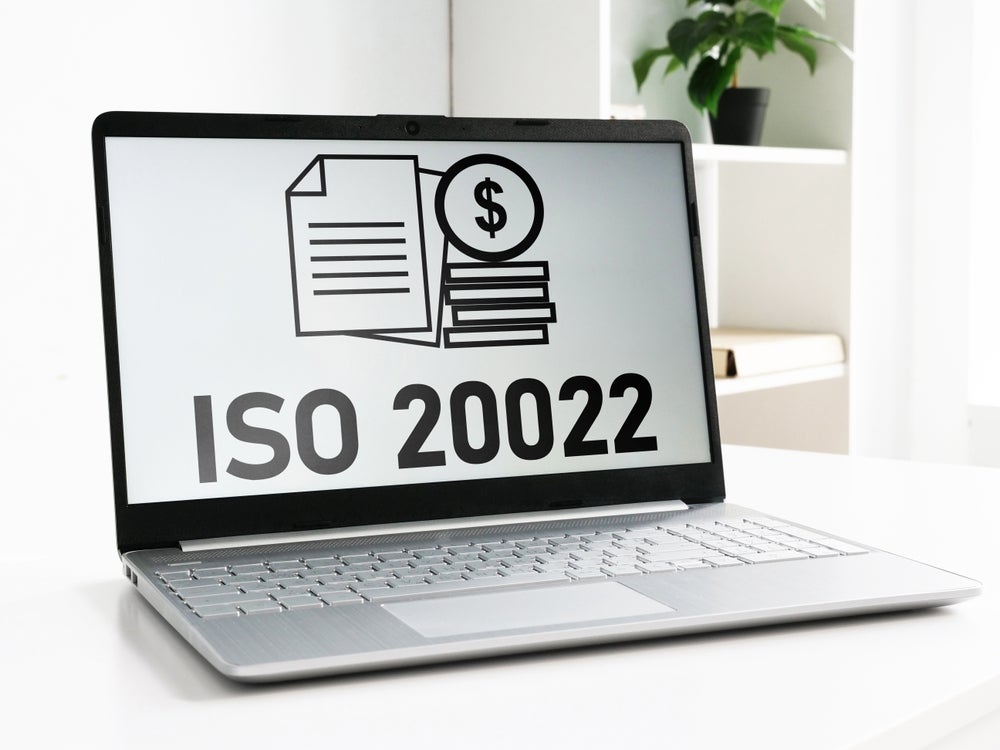As the financial services industry approaches the 22 November 2025 deadline for ISO 20022 for CBPR+ adoption, institutions worldwide are grappling with the challenges and opportunities presented by this new standard. ISO 20022 is set to become the sole globally recognised standard for interbank cross-border payments, replacing the MT messaging format with the new MX format. This transition promises to enhance data richness, improve analytical capabilities, and streamline processes, but it also requires significant preparation and adaptation.
ISO 20022: not just a compliance update
ISO 20022 is not just a compliance update; it represents a fundamental shift in how financial messages are structured and processed. The enriched data format of ISO 20022 allows for improved straight-through processing (STP), better regulatory compliance, enhanced interoperability, and a superior customer experience. Despite these benefits, according to Swift as of December 2024, only 32.9% of organisations had adopted ISO 20022 for Cross-Border Payments and Reporting Plus (CBPR+), highlighting the need for accelerated migration efforts.
By November 2025, the co-existence period of MT and MX messages will officially end. All payment instructions must be exchanged in ISO 20022 formats. Financial institutions that are not fully compliant by this date will face operational, business, transparency, and financial impacts.
Consequences of non-compliance
Non-compliance with ISO 20022 could have severe consequences for message handlers. From an operational perspective, receivers face a risk of data truncation. While missing or truncated data will be re-instated for CBPR+ transactions, the loss of data is a big risk for instructions relayed to a payment market infrastructure. For senders, MT messages that cannot be translated risk being NAK’ed (not acknowledged). Plus, MT messages sent to be converted will be subject to additional FIN network validation and, even if they pass, messages could still be aborted if they are not translatable.
In terms of business impact, receivers of translated messages will lose the rich and structured data benefits brought by ISO 20022. Users relying on translation services may have to store and relay the information contained in payment instructions for financial crime compliance purposes. For senders, converted messages will not contain structured and rich data.
Looking at financial impact, in-flow translation will be subject to disincentive pricing from January 2026. Institutions are required to opt out of in-flow translation by the end of 2025 for all messages in scope, otherwise they will face charges. For senders, anyone leveraging the contingency services will be automatically subscribed and charged disincentive pricing.
Finally, from a transparency perspective, the sender of CBPR+ messages may receive abort messages if there are issues with the delivery to the recipient. For senders, messages converted from MT to ISO 20022 will bear a flag allowing recipients to identify that received messages have been converted by Swift.
Without an ISO 20022 migration strategy, financial institutions risk creating a competitive disadvantage for their payment services, blocking their digital roadmap and failing to comply with the Swift mandate.
Six steps to compliance
The transition to ISO 20022 presents several challenges for financial institutions, such as ensuring that current systems and infrastructure can handle the new format. Other hurdles include managing the complexity of migration to avoid disruptions, minimising disruptions to customer services and operations, and allocating sufficient time, cost, and resources to the migration process.
To navigate these challenges, financial institutions can follow a six-step approach to ensure compliance with ISO 20022 for CBPR+:
- Internal assessment and impact analysis: Conducting a comprehensive internal assessment and gap analysis is the first step. This helps organisations understand their current state and what needs to be done to achieve compliance.
- Finding and managing partnerships: Leveraging existing partnerships and forming new ones can streamline the migration process. Organisations can choose to implement the transition themselves or outsource it to partners with greater expertise.
- Creating a project plan: Developing a detailed project plan that outlines timelines, responsibilities, and milestones is crucial. This plan should cover all functional specifications, business requirements, and technical implementations.
- Testing: Rigorous testing is essential to ensure that the new messaging format works correctly. This includes internal testing, as well as testing with partners and other stakeholders.
- Implementation and roll-out: Once testing is complete, the implementation phase begins. Organisations can choose between a big-bang approach, a phased approach, or a free transition approach, depending on their readiness and preferences.
- Futureproofing: Looking beyond the November 2025 deadline, institutions need to consider future developments and ensure their systems can handle ongoing changes and enhancements in the ISO 20022 standard.
November 2025 and beyond
The transition to ISO 20022 is a critical milestone for the industry. While the challenges are significant, the benefits of enhanced data richness, improved processing capabilities, and better regulatory compliance make it worthwhile.
As we approach the final months of the CBPR+ coexistence period, the message is clear: financial institutions must act now to ensure they are ready. The benefits of early adoption are already evident, and full industry-wide compliance will only amplify these advantages, paving the way for a more efficient, transparent, and innovative financial ecosystem. By doing so, institutions can unlock the full potential of ISO 20022 and position themselves for future success.

Andy Turner is Director, Global Head of Financial Messaging Product Management at Finastra








